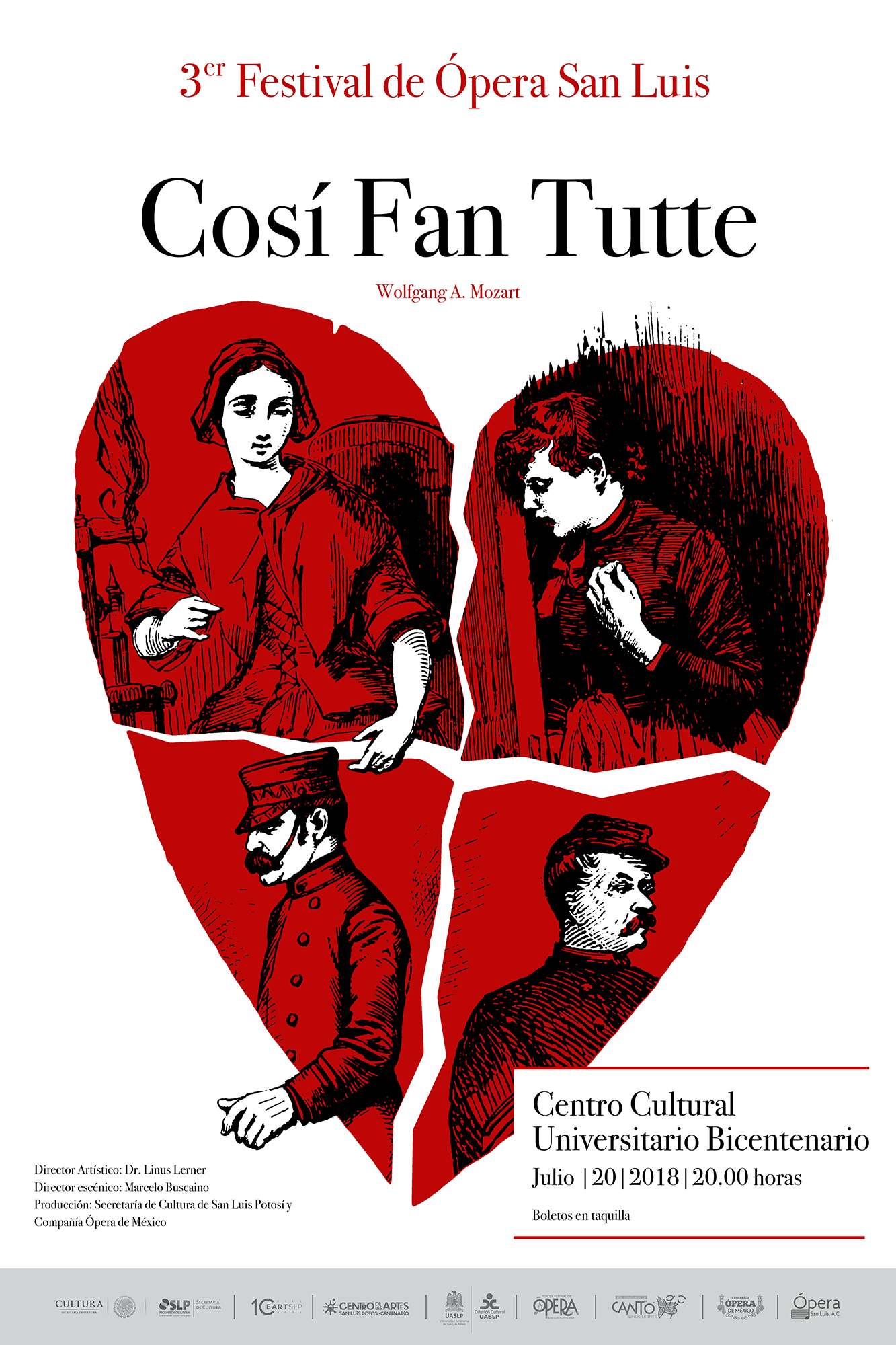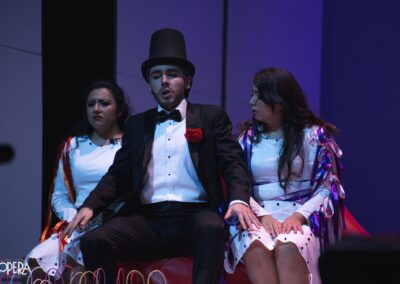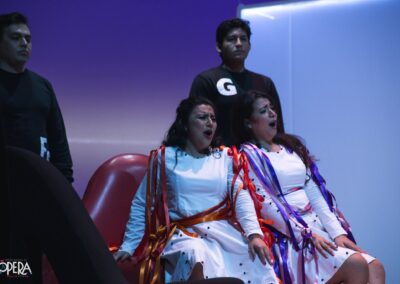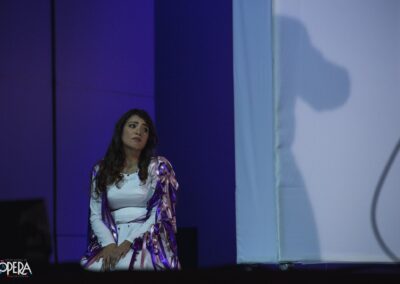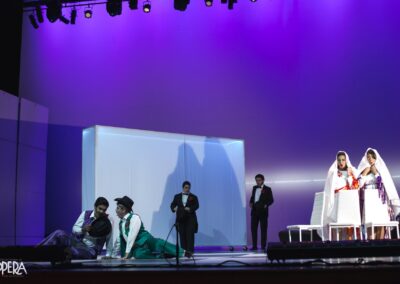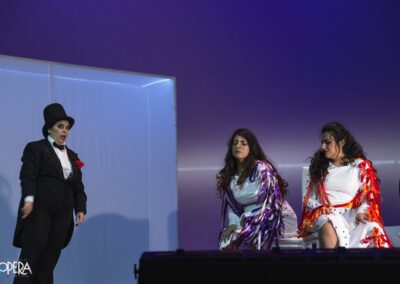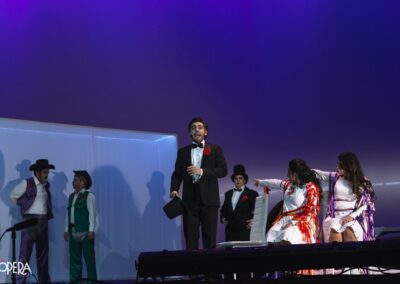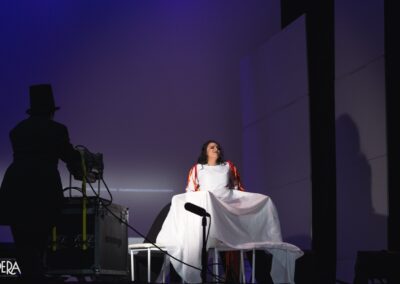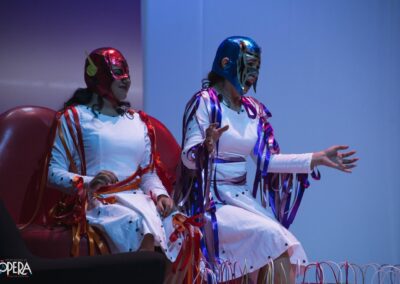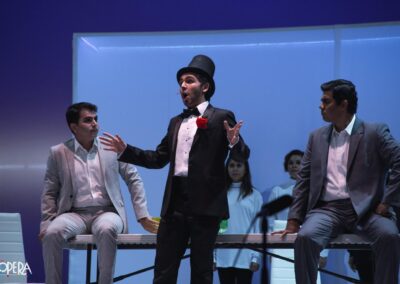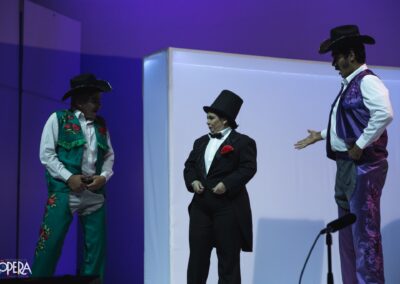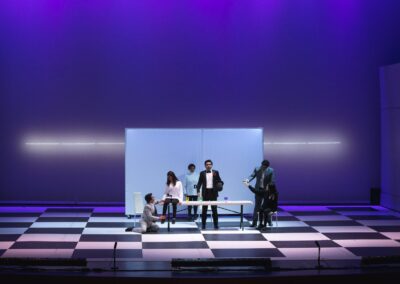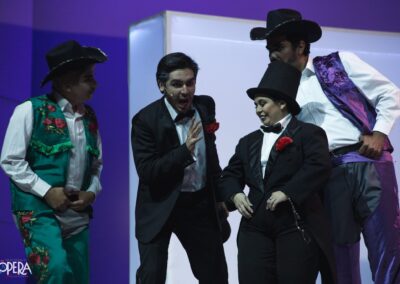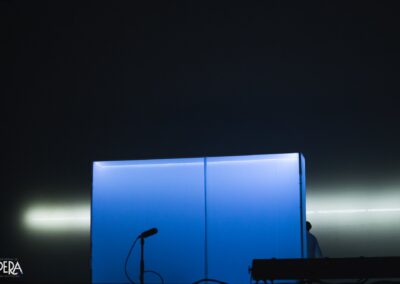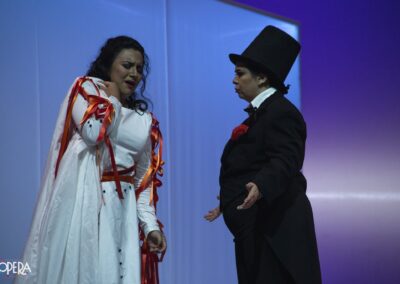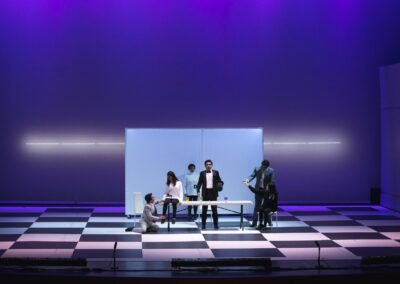Cosí Fan Tutte
Così Fan Tutte
After having worked a few times in a festival/academy in Saltillo in northern Mexico, where I staged individual scenes from many operas, I was invited to direct « Così Fan Tutte » for the Opera Festival in the city of San Luís Potosì in the center-north of that same country. It is a festival that also involves a summer academy for opera singing students.
There was practically no budget for set and costumes. The total time between the start of rehearsals and the performance – a single performance – was only ten days. Rehearsals took place in small spaces that were completely different from the stage where the show was presented (a large auditorium at the local university). The stage accessories were mostly improvised. On the real stage, a technical rehearsal was carried out, in order to adapt what had been rehearsed in a completely different space, two rehearsals with the orchestra and then the performance. For many spectators, it was the first time they had seen/heard an opera.
Artistically speaking, it was a situation of sheer adversity. Despite this, I avoided presenting a historicist/illustrative – however poor – version of Così Fan Tutte. I decided to tell the story using some local elements, in order to facilitate the audience’s identification with the characters, but also to create a variety of different environments/atmospheres that reflected the different situations and, above all, the inherent and essential questioning that permeates the play.
The set was very minimal with the floor shaped like a chessboard – thus alluding to the various « games » that permeate love and society; I closed the scene laterally with vertical partitions, therefore creating continuity with the floor; In the background, there was a cyclorama, whose colors subtly changed throughout the show and which was crossed from behind by a line of fluorescent lights that went up and down, getting closer and further away, creating an atmospheric effect of pulsating light inspired by Mark Rothko; microphones and projectors were visible. On top of the chessboard, there were trivial/homemade elements such as a sofa and two stereotypically feminine armchairs (respectively, in the shape of a mouth and high-heeled shoes), a plastic garden table and its chairs and, as a disruptive element, a movable three-dimensional rectangle that was illuminated from the inside and that had as its basic reference in « The Origin of the World » by Gustave Courbet and the fractures of Lucio Fontana’s paintings. These elements were moved constantly and choreographically. In this way, throughout the performance, sixteen different environments/set-arrangements were produced.
The costumes, in turn, reflected the relationships between the various characters: Alfonso and Despina both wore a tuxedo as if they were masters of ceremonies; Fiordiligi and Dorabella had basic dresses with fringes and bows that fell throughout the opera, as if to illustrate the increasing mental and emotional confusion in which they found themselves. In their opening scene however, they wore masks of Mexican wrestlers, while they spoke of love as a game of consumption and competition between them; Guglielmo and Ferrando began like two bank employees, dressed in gray suits, immersed in social conventions, only to return as new lovers disguised as « American Electric Cowboys » – the Mexicans’ rich neighbours – who seduce both women with their self-confidence and pretension, showing off the money they pretend to have.
To add more layers of meaning and interpretative possibilities to the scenes, I dubbed all the soloists with six extras who, still in the overture, came out of the moving rectangle « L’Origine du Monde ». They were dressed in white and black, like chess figures and had the Soloists’ initials printed on their clothes, almost as if they were elements of a chemical table – something that is the basis of the name that Goethe gives to his book on love relationships « The Elective Affinities »… These extras participated scenically and choreographically in the play, also moving the scene elements in order to create new performance spaces.
In addition to these six extras, I had a gorilla intervene – a symbol of something primitive and, at times, brutal that permeates human behavior. At the ouverture, he meets an elegant lady who seduces him, creating in him though the idea of shame and guilt. This elegant lady is precisely part of the chorus – men and women dressed in formalwear who take voyeuristic pleasure in observing the soloists’ mishaps.
I followed the libretto, using humorous elements, bringing it into a contemporary (and partly timeless) context and giving it some local touches. It was in this production, however, that I defined something that became a characteristic of my own, an identity of my stage direction: the use of text and, above all, questions (recited or projected onto the stage and, in the latter case, becoming part of the scenography) that reflect, in my opinion, the essence of the work itself, as well as of my interpretation of it.
In the specific case of « Così Fan Tutte », I used around forty-five or fifty questions/comments.Here are some of them: How do all women do? (in allusion to the title) How do all men do?How would you react if someone questioned your partner’s fidelity? Can loyalty be valued economically? Would you make someone suffer to prove something? What is fidelity? Would you fall in love more easily with someone with money or without? How does other people’s opinions influence the way you behave? How do you feel when you discover that you really like someone, whom, at the base, you don’t want to like? Aren’t passivity and submission also a form of manipulation? Does monogamy seem natural to you or is it a social convention? If all women do it and all men do it, how would you do it?
I believe in the transformative capacity of art through emotional communication with the public, through the ecstasy that opera, as a language, can provide and through the stimulus to reflection that questioning anchored in the play’s dramaturgy can provoke. « Così Fan Tutte » was a first experience in this direction.

